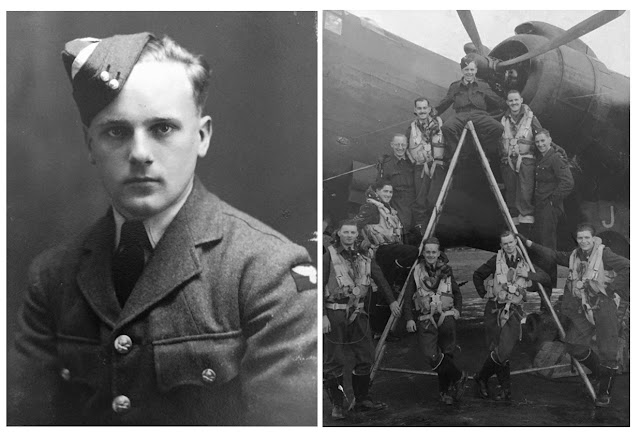Remembering Dunkirk
Many of you will have seen Christopher Nolan’s film Dunkirk in
cinemas recently. It got me thinking if any small boats sailed from Swansea to
join in the armada. I didn’t have much luck although I did come across the name
of Mr Charles Drewson, from Sketty. After a few phone
calls to his sons, I was informed that he was certainly at Dunkirk, and he is
one of the last survivors. I was given a family-only published booklet on his
life that was written in 2013.
In this article, I will be covering his first few voyages. Mr Charles
Drewson, local Sketty resident was born 1922. On leaving school, after having a
variety of jobs, including working in a chemist shop, landscape gardener and
then as a messenger in a cake shop, he got restless and wanted to go to sea.
Walking around the docks, Charles called at shipping agents, such as Fyffe’s, the Norwegian Consulate, and the Swansea Shipping Federation. He was given what was
known as a Pier Head Jump, which is when you join a ship at the last minute.
Charles was offered a position on the S.S. British Fusilier,
but when he arrived unfortunately the ship had already left the dock.
His first voyage was on 20 August 1938; Charles was a Mess Room Boy on
the oil tanker S.S. British Grenadier. The ship
was bound for Dingle, Liverpool without a cargo. From Liverpool, it sailed via
the Mediterranean to Abadan, Persia for oil, then on to Alexandria and Port
Said for stores, passing through the Suez Canal.
As Mess Room Boy, Charles had to scrub the long-planked deck and
alleyway. Poor Charles was sea sick, and was often sick in the same bucket with
the cleaning water. Mess Room Steward, another Swansea man, George, would often say, “Not good enough, start all
over again”. Second Steward Jack, was also a Swansea
man. While the S.S. British Grenadier was at
Abadan, it was loaded with 10 oil jetties. The crew were taken on a bus to the
Bawada Club, where a cinema show was put on. The men had to stand whilst they
sang the National Anthem……. of Persia.
While the S.S. British Grenadier was UK bound
to Grangemouth it had its orders changed and the ship came back to Swansea.
Charles had been away for 7 months in the Middle East, signing off at the
Shipping Office on 7th February 1939. The S.S. British Grenadier
was attacked and sunk by the U-103, on 22nd May
1941, West Africa.
At the time of the outbreak of the Second World War, September 1939,
Charles was on his second voyage aboard S.S. Loch Lomond,
signing on 16 May 1939. The voyage was from Swansea to Sierra Leone, West
Africa, with a cargo of anthracite or tinplate, From Sierra Leone it sailed on
to Australia. The ship’s clocks were altered every hour every night to arrive
at Australia at their time.
Landing at Fremantle, they were loaded with Anderson air raid shelters
and other lengths of steel requisitioned to Newport, Wales. Charles signed back
on the S.S. Loch Lomond, on 17th December 1939, the ship
sailed form Barry to Portugal. Arriving back at Barry, 18th March 1940. S.S. Loch Lomond was unfortunately sunk on 20th October
1940, by U-100.
Later, Charles joined his seafaring father on the M.V. Norrix. Charles was now an Ordinary Seaman. They
were ordered to Dunkirk, to assist in the evacuation, and the M.V. Norrix pulled a barge full of soldiers across the English
Channel. Back in Blighty, on the 17th June 1940, Charles after earning his
Dunkirk Medal, was discharged. This wouldn’t be the end of Charles’ services
with the Merchant Navy. He would later serve on S.S. Empire Gull,
which on 12 December 1942, was attacked and sunk by U-177
off East Africa. Of a crew of 46, two were killed, including Mumbles man, Edward H. Coode. Charles escaped with burns to his
hands.
This family booklet makes very interesting reading – it is a shame that
more people haven’t put into words their experiences, so that their descendants
have a written account for posterity.
Copyright – The Bay Magazine – September 2017



Comments
Post a Comment